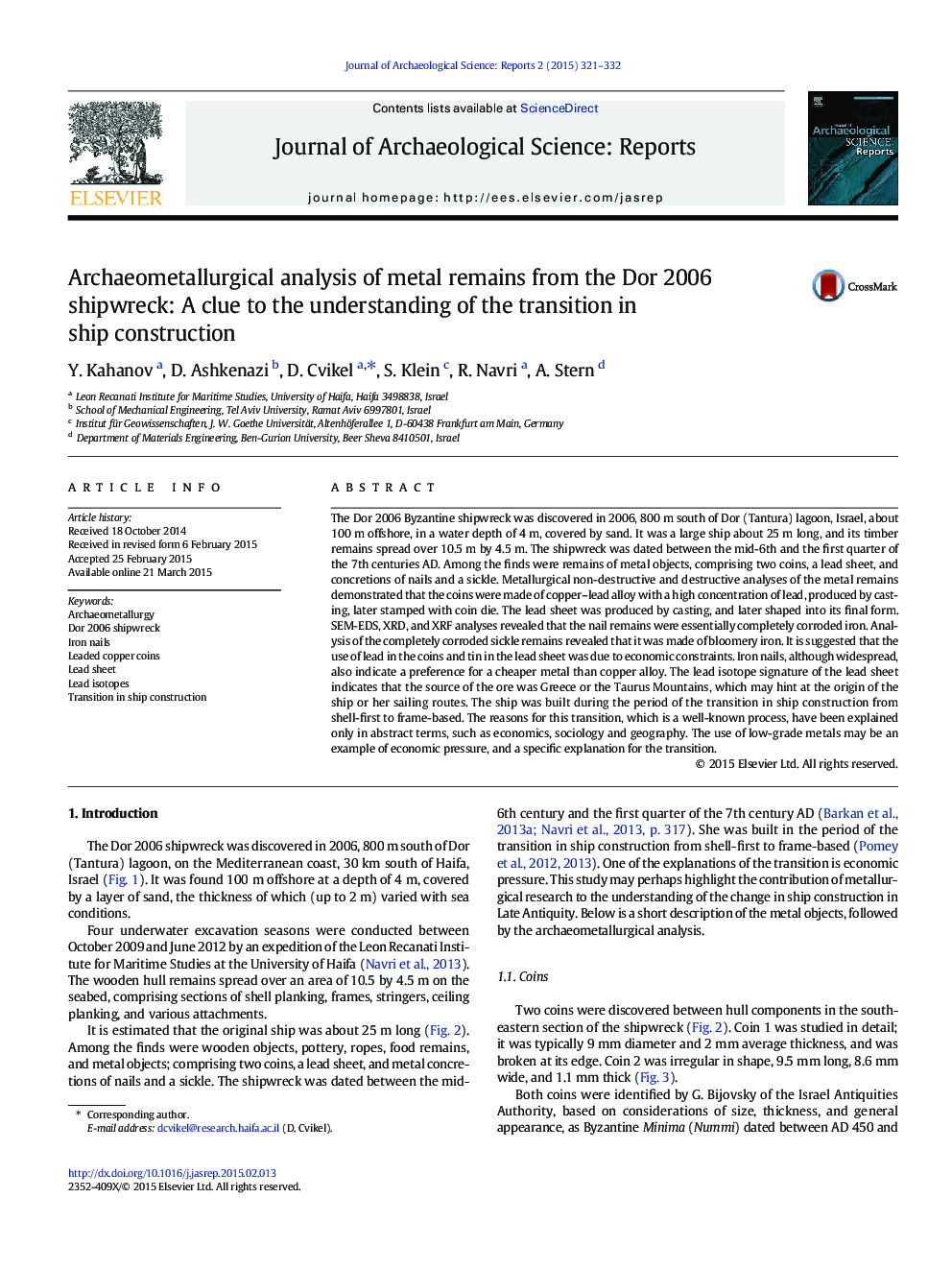| کد مقاله | کد نشریه | سال انتشار | مقاله انگلیسی | نسخه تمام متن |
|---|---|---|---|---|
| 7446389 | 1483941 | 2015 | 12 صفحه PDF | دانلود رایگان |
عنوان انگلیسی مقاله ISI
Archaeometallurgical analysis of metal remains from the Dor 2006 shipwreck: A clue to the understanding of the transition in ship construction
ترجمه فارسی عنوان
تجزیه و تحلیل آرچای متالورژیکی فلزات از کشتی خراب فروس 2006 باقی مانده است: یک سرنخ به درک گذار در ساخت کشتی
دانلود مقاله + سفارش ترجمه
دانلود مقاله ISI انگلیسی
رایگان برای ایرانیان
کلمات کلیدی
باستانشناسی 2006 کشتی خراب، ناخن آهن، سکه های مس سرب، برگه ی راهنما، ایزوتوپهای سرب، گذار در ساخت کشتی،
موضوعات مرتبط
علوم انسانی و اجتماعی
علوم انسانی و هنر
تاریخ
چکیده انگلیسی
The Dor 2006 Byzantine shipwreck was discovered in 2006, 800Â m south of Dor (Tantura) lagoon, Israel, about 100Â m offshore, in a water depth of 4Â m, covered by sand. It was a large ship about 25Â m long, and its timber remains spread over 10.5Â m by 4.5Â m. The shipwreck was dated between the mid-6th and the first quarter of the 7th centuries AD. Among the finds were remains of metal objects, comprising two coins, a lead sheet, and concretions of nails and a sickle. Metallurgical non-destructive and destructive analyses of the metal remains demonstrated that the coins were made of copper-lead alloy with a high concentration of lead, produced by casting, later stamped with coin die. The lead sheet was produced by casting, and later shaped into its final form. SEM-EDS, XRD, and XRF analyses revealed that the nail remains were essentially completely corroded iron. Analysis of the completely corroded sickle remains revealed that it was made of bloomery iron. It is suggested that the use of lead in the coins and tin in the lead sheet was due to economic constraints. Iron nails, although widespread, also indicate a preference for a cheaper metal than copper alloy. The lead isotope signature of the lead sheet indicates that the source of the ore was Greece or the Taurus Mountains, which may hint at the origin of the ship or her sailing routes. The ship was built during the period of the transition in ship construction from shell-first to frame-based. The reasons for this transition, which is a well-known process, have been explained only in abstract terms, such as economics, sociology and geography. The use of low-grade metals may be an example of economic pressure, and a specific explanation for the transition.
ناشر
Database: Elsevier - ScienceDirect (ساینس دایرکت)
Journal: Journal of Archaeological Science: Reports - Volume 2, June 2015, Pages 321-332
Journal: Journal of Archaeological Science: Reports - Volume 2, June 2015, Pages 321-332
نویسندگان
Y. Kahanov, D. Ashkenazi, D. Cvikel, S. Klein, R. Navri, A. Stern,
